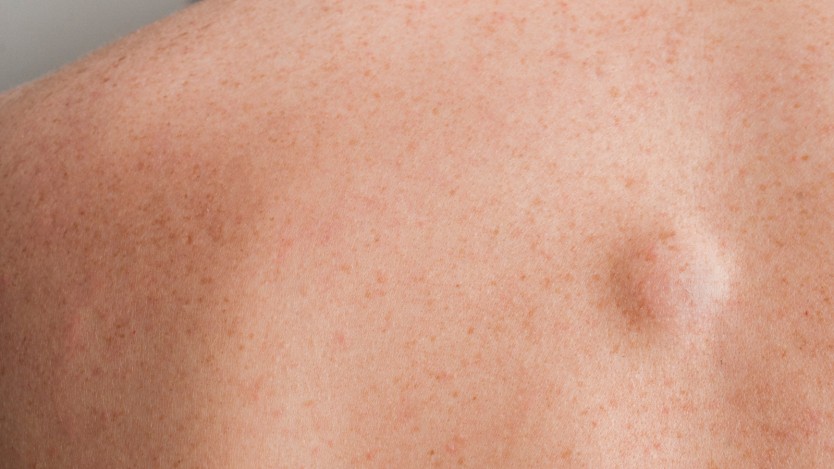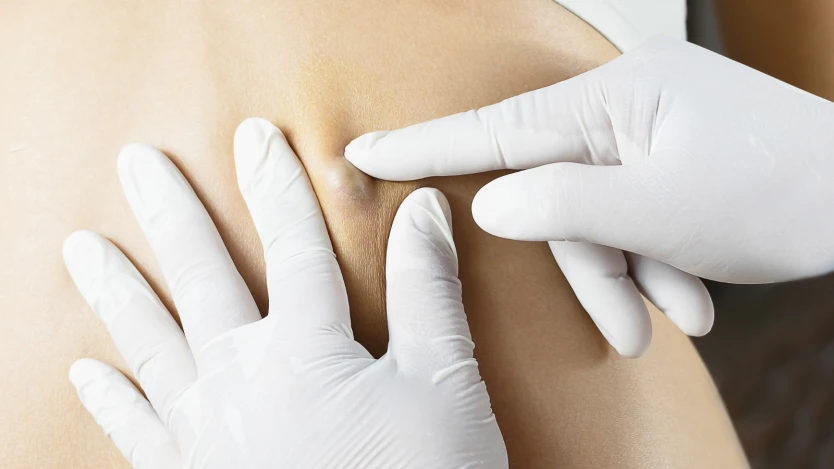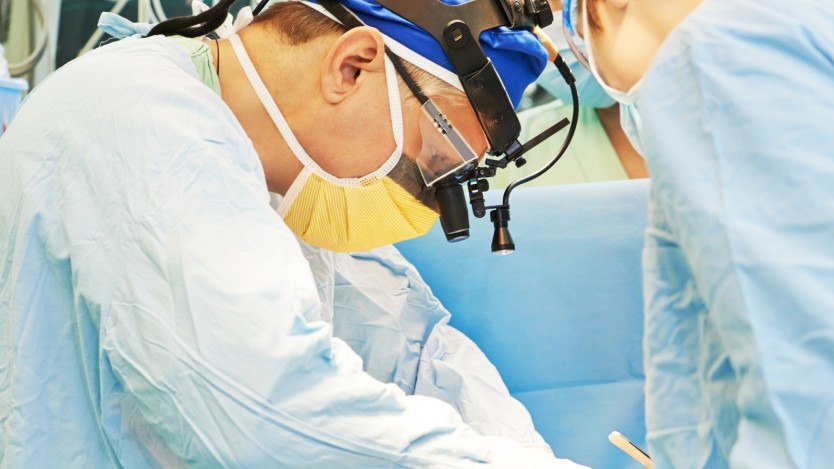Sebaceous cyst on scalp: what it is, causes and treatment

- Interesting facts about sebaceous cysts
- What are sebaceous cysts?
- How do sebaceous cysts form on the scalp?
- What is the treatment for sebaceous cysts on the scalp?
- Treatment for infected sebaceous cysts
- Request a surgical assessment consultation with Operarme
Interesting facts about sebaceous cysts
- Sebaceous cysts on the head form throughout life, mainly due to blockage of the pilosebaceous follicles.
- Along with lipomas on the back, sebaceous cysts on the scalp are the most common.
- The only possible solution for sebaceous cysts on the scalp is minor surgery.
What are sebaceous cysts?
A sebaceous cyst on the scalp is an accumulation of fat and waste substances formed by cellular detritus encapsulated in normal epithelial tissue in the form of a nodule. As the name suggests, they are located on the scalp between the superficial skin of the head and the skull.
There is a great variety of cysts within the large group of fatty cysts, where sebaceous or epidermal cysts are the most frequent, although we can also find others on a regular basis, such as millium cysts, pillar cysts and trichilemmal cysts.

How do sebaceous cysts form on the scalp?
Sebaceous cysts on the scalp usually form during the development of life and are infrequent at birth. This characteristic means that most head fat cysts are considered to be acquired, the term by which they are known medically.
Acquired fatty cysts in the head or in any anatomical location in the human body are due to a variety of causes. It is now considered that any obstruction of a part of the pilosebaceous follicle (body hair) may be susceptible to progress to the formation of a sebaceous cyst.
The pilosebaceous follicle is an anatomical and functional assembly of the skin. This set of structures is made up of several substructures that integrate it.
Among all these substructures, the hair and sebaceous glands are the ones that most interfere in the formation of the fatty cyst on the head.

The sebaceous glands are small clusters of cells that produce sebum or fluid with a high fat content that serves to nourish and protect the hair itself and the surrounding skin.
The mechanism of production of sebaceous cysts on the scalp is caused by the obstruction of the outflow of the contents of the sebaceous gland that accompanies the hair follicle.
This obstruction leads to the accumulation of proteinaceous or sebaceous material inside the skin, which ends up forming a small capsule surrounded by epithelial cells, forming the head fat cyst.
There are also some hereditary diseases that are often associated with sebaceous cysts in any location on the human body although they occur very infrequently. These diseases include:
- Gardner's syndrome.
- Gorlin's syndrome.
- Congenital pannokinia.

Free Assessment for Contracting Medical Services
Operarme’s Patient Service will contact you and solve all your questions on the medical service you need.
What is the treatment for sebaceous cysts on the scalp?
Sebaceous cysts on the head are structures where protein or sebaceous substances accumulate around a layer of epithelial tissue that surrounds them.
On their own, they do not usually cause many problems, especially if they are small in size.
The only way to definitively solve the presenceof sebaceous cysts on the scalp is by removing them in a small surgical procedure.
- The surgery is performed under local anaesthesia administered with a simple injection that numbs the area of skin surrounding the cyst so that an incision can be made in the skin and the cyst can be completely removed.
- The wound is then closed using surgical staples or simple sutures (depending mainly on the size of the fatty cyst on the head).
Staples and stitches are usually removed 7 to 10 days after the operation.
- Wound healing is very basic and can be done by the patient at home.
Complications of sebaceous cysts
The main problem with sebaceous cysts on the head is the ease with which they tend to become infected. In this type of situation the size of the cyst increases, the skin around the cyst becomes inflamed and in most cases causes significant pain.
Treatment for infected sebaceous cysts
The treatment of infected sebaceous cysts on the scalp is usually antibiotics and anti-inflammatory drugs for a few days. With this type of treatment they are usually resolved in a large percentage of cases.
Once the infection has passed, the cyst returns to its previous size, and surgical intervention is necessary to remove them completely in a second stage.
In the case of sebaceous cysts of the scalp that do not respond adequately to antibiotics, surgical intervention is often necessary to drain the pus content inside the cysts.

The wound is closed with the normal healing of the skin and no sutures are necessary or appropriate.
In this type of intervention, the skin surrounding the fatty cyst in the area where the lipoma is located is anaesthetised and an incision is made over the infected cyst to remove its contents.
After this type of intervention, a small piece of gauze is usually left behind to evacuate the contents of the infected cyst.
Request a surgical assessment consultation with Operarme
If you are suffering from the discomfort caused by the growth of one or more sebaceous cysts on the scalp or another part of the body and you are looking for a specialist in your city, to solve them as soon as possible by means of a surgery to remove them, you can contact our patient service department by calling at +34 91 141 33 56 or using the contact form and request a free appointment with our specialists.
You can also click in the following banner:

Do you need to remove sebaceous cysts in the scalp?
Request a free and immediate appointment with our specialists and get a surgery date
Medical disclaimer: All the published content in Operarme is intended to disseminate reliable medical information to the general public, and is reviewed by healthcare professionals. In any case should this information be used to perform a diagnosis, indicate a treatment, or replace the medical assessment of a professional in a face to face consultation. Find more information in the links below:


